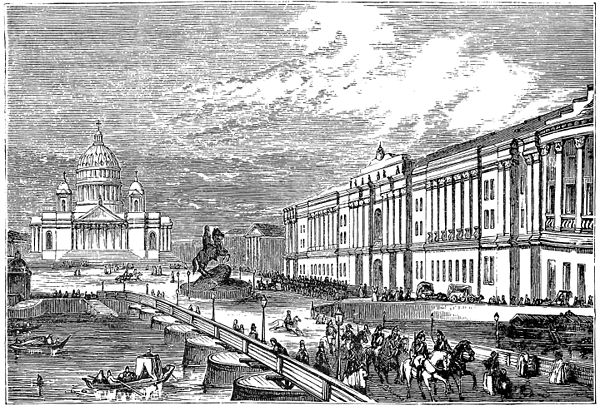they did not penetrate far into Siberia until comparatively recent times. With their extension they split up into numerous tribes and independent organizations; thus their unity was lost, and they took the form in which we find them to-day. Poles and Russians are both of the same race, and their languages have a common origin; but nowhere in the world can be found two people who hate each other more heartily. However much the Russians have favored a Pan-Slavist union, you may be sure the Poles look on it with disfavor.
"The ancient Slavonic language has given way to the modern forms in the same way that Latin has made way for French, Italian, Spanish,

ST. ISAAC'S CHURCH AND ADMIRALITY SQUARE
and other tongues and dialects with a Latin origin. In fact those languages hold the same relation to Latin that Polish, Russian, Servian, and Bulgarian hold towards ancient Slavonic. The Romish Church uses Latin in its service, and the Russo-Greek Church uses the old Slavonic; the Poles, Bohemians, and others have adopted the Roman alphabet, but the Russians use the Slavonic characters in a modified form. The Russian alphabet has thirty-six letters, some being Roman, others Greek, and others Slavonic. After you have learned the alphabet and can spell out the
